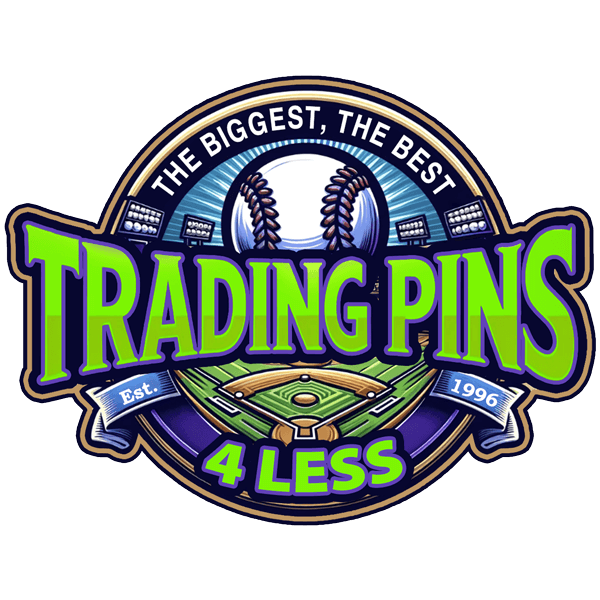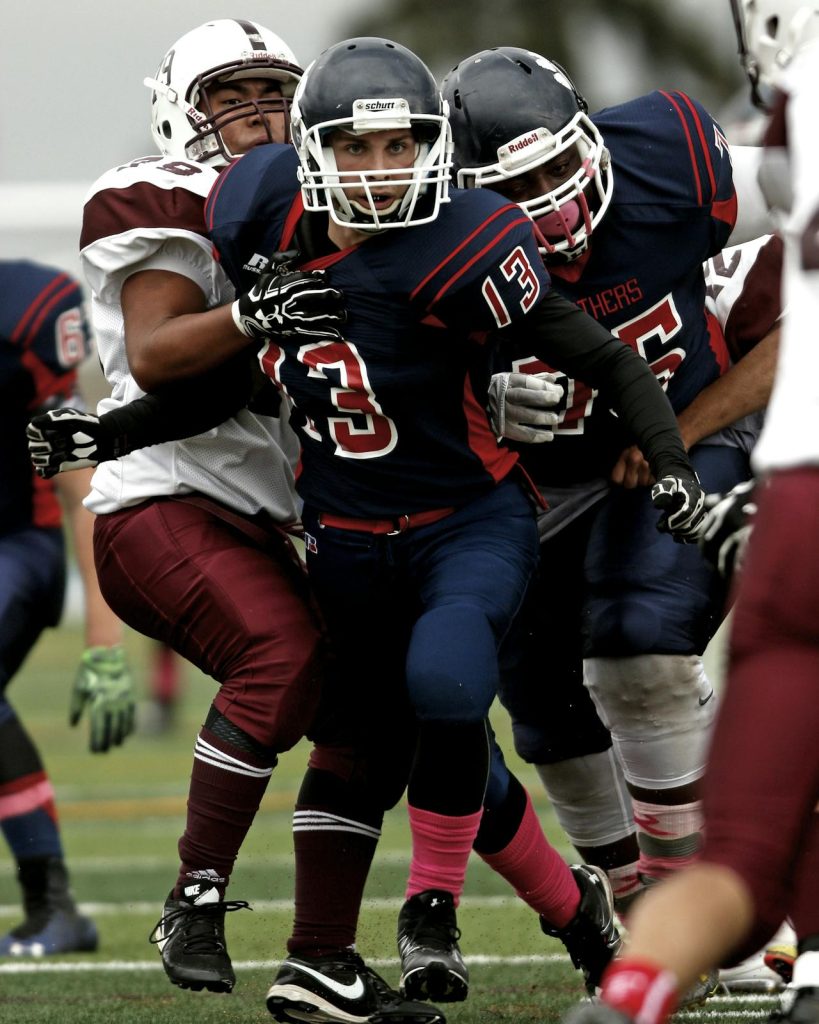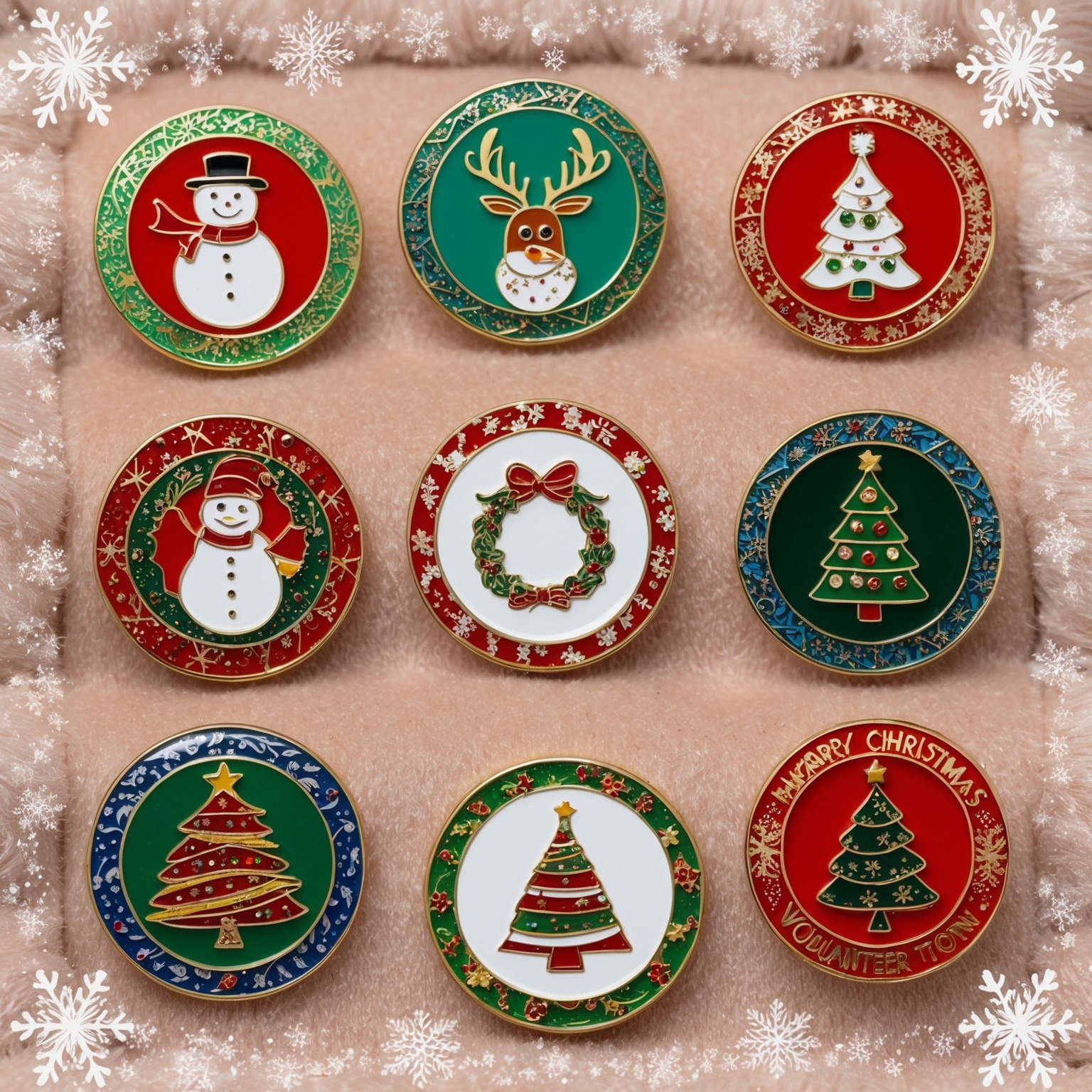The Allure of Sports Trading Pins
Sports trading pins are more than just collectibles; they are cherished symbols of camaraderie, competition, and team spirit. From youth leagues to professional teams, trading pins have become an integral part of the sports culture, providing fans and players with a tangible connection to their favorite sports moments. Customizing sports trading pins can elevate their significance, making them memorable keepsakes that leave a lasting impression.
This article will explore how to design and customize sports trading pins that stand out and make an impact. We will cover essential design principles, the customization process, and tips for creating unique and engaging pins that resonate with players, fans, and collectors alike. Whether you are designing pins for a sports team, event, or trading community, these insights will help you create pins that truly make a mark.
1. Understanding the Significance of Sports Trading Pins
The History and Evolution
Sports trading pins have a rich history, dating back to the early 20th century. They first gained popularity during the Olympic Games, where athletes and fans exchanged pins as tokens of goodwill and friendship. Since then, the tradition has spread to various sports, including baseball, softball, soccer, hockey, and more.
Example: The 1980 Winter Olympics in Lake Placid saw a surge in pin trading, with athletes and spectators exchanging pins as a symbol of international unity and sportsmanship.
Cultural Impact and Community Building
Trading pins foster a sense of community and belonging among sports enthusiasts. They serve as mementos of significant events, milestones, and personal achievements, creating lasting memories for players and fans.
Example: Little League Baseball teams often trade pins during tournaments, creating bonds and friendships that extend beyond the field.
2. Essential Design Principles for Sports Trading Pins
Clarity and Simplicity
A successful sports trading pin design should be clear and easy to recognize. Overly complex designs can be difficult to interpret, especially on a small pin. Focus on simplicity and clarity to ensure that the key elements of your design stand out.
Tips:
- Bold Lines: Use bold lines to define the shapes and elements of your design.
- Clear Imagery: Ensure that the imagery and text are easily discernible, even at a small size.
- Contrast: Utilize contrasting colors to make the design pop and enhance visibility.
Example: A soccer team’s trading pin features a simple yet striking design with the team’s logo, a soccer ball, and the year of the tournament in bold, contrasting colors.
Relevance and Personalization
Your design should be relevant to the team, event, or theme it represents. Personalization adds a unique touch, making the pins more meaningful and memorable.
Tips:
- Team Colors and Logos: Incorporate the team’s colors and logos to create a sense of identity and pride.
- Event Details: Include specific details about the event, such as dates, locations, and milestones.
- Player Names and Numbers: Adding player names or numbers can make the pins personal keepsakes for team members.
Example: A hockey team’s trading pin features the team’s logo, colors, and the name of each player, creating a personalized memento for the team.
3. The Customization Process
Brainstorming and Concept Development
The first step in customizing sports trading pins is brainstorming and developing a concept. Consider the purpose of the pins, the target audience, and the key elements you want to include.
Tips:
- Involve the Team: Gather input from team members, coaches, and fans to generate ideas and ensure the design reflects the team’s spirit.
- Sketch Ideas: Create rough sketches of different concepts to explore various design possibilities.
- Feedback: Seek feedback on your concepts to refine and improve the design.
Example: A baseball team holds a brainstorming session with players and coaches, generating ideas for their trading pin design. They sketch several concepts and gather feedback to choose the best one.
Working with Designers
Once you have a clear concept, work with a professional designer to bring your vision to life. A skilled designer can help refine your ideas and create a polished, high-quality design.
Tips:
- Provide Clear Guidelines: Share your concept sketches, color schemes, and any specific elements you want to include with the designer.
- Collaborate: Work closely with the designer, providing feedback and suggestions throughout the design process.
- Review Proofs: Carefully review design proofs to ensure all details are accurate and meet your expectations.
Example: The baseball team collaborates with a professional designer, providing detailed guidelines and reviewing multiple proofs to finalize their trading pin design.
Choosing Materials and Finishes
The choice of materials and finishes can significantly impact the look and feel of your trading pins. High-quality materials and finishes can enhance the design and durability of the pins.
Tips:
- Metal Types: Common metals for trading pins include brass, copper, and zinc. Choose a metal that complements your design and budget.
- Enamel Options: Soft enamel and hard enamel are popular options for adding color to pins. Soft enamel offers a textured look, while hard enamel provides a smooth, polished finish.
- Special Features: Consider adding special features such as glitter, glow-in-the-dark elements, or movable parts to make your pins unique.
Example: The baseball team chooses hard enamel for a smooth, durable finish and adds glitter to highlight their team’s logo, creating an eye-catching trading pin.
4. Production and Quality Control
Selecting a Manufacturer
Choosing the right manufacturer is crucial for producing high-quality trading pins. Look for manufacturers with experience in creating custom pins and a reputation for quality and reliability.
Tips:
- Research and Compare: Research different manufacturers, compare their services, and read customer reviews.
- Request Samples: Ask for samples of previous work to assess the quality of their pins.
- Communicate Clearly: Provide detailed specifications and communicate your expectations clearly to the manufacturer.
Example: The baseball team researches several manufacturers, requests samples, and selects a reputable company known for producing high-quality trading pins.
Ensuring Quality Control
Quality control is essential to ensure that your trading pins meet your standards. Inspect the pins carefully upon delivery to check for any defects or inconsistencies.
Tips:
- Detailed Inspection: Inspect the pins for accurate colors, clean lines, and correct details. Look for any imperfections such as scratches or uneven finishes.
- Consistent Quality: Ensure that all pins in the batch are consistent in quality and appearance.
- Address Issues Promptly: If you identify any issues, communicate with the manufacturer promptly to resolve them.
Example: Upon receiving their trading pins, the baseball team conducts a detailed inspection to ensure each pin meets their quality standards. They address a minor issue with the manufacturer, who promptly provides a solution.
5. Marketing and Distributing Your Pins
Creating Buzz and Excitement
Generating excitement around your trading pins can enhance their impact and increase interest among players and fans.
Tips:
- Teasers and Previews: Share teasers and previews of the pin design on social media and team websites to build anticipation.
- Launch Events: Host a launch event or unveiling ceremony to introduce the pins and create a sense of occasion.
- Engage the Community: Involve the community in the excitement by sharing stories, photos, and behind-the-scenes content related to the pin creation process.
Example: The baseball team shares teasers of their trading pin design on social media, building excitement among fans and creating a buzz ahead of the launch event.
Effective Distribution
Distributing your trading pins effectively ensures they reach the right audience and make a lasting impact.
Tips:
- Trading Events: Distribute pins at trading events, tournaments, and games to maximize exposure and engagement.
- Online Sales: Offer pins for sale on team websites and social media platforms to reach a wider audience.
- Fan Clubs and Memberships: Include trading pins as part of fan club memberships or season ticket packages to add value and encourage loyalty.
Example: The baseball team distributes their trading pins at the season opener and offers them for sale on their website, reaching both in-person and online audiences.
6. Evaluating Impact and Feedback
Gathering Feedback
Collecting feedback from players, fans, and collectors helps you understand the impact of your trading pins and identify areas for improvement.
Tips:
- Surveys and Polls: Use surveys and polls to gather feedback on the pin design, quality, and overall reception.
- Social Media Interaction: Monitor social media platforms for comments, reviews, and posts related to your trading pins.
- Direct Conversations: Engage in direct conversations with team members and fans to gather firsthand feedback.
Example: The baseball team conducts an online survey and engages with fans on social media to gather feedback on their trading pins, using the insights to inform future designs.
Analyzing Success
Analyzing the success of your trading pins involves looking at both qualitative and quantitative data to gauge their impact and popularity.
Tips:
- Sales Data: Analyze sales data to understand the demand and popularity of your trading pins.
- Engagement Metrics: Track engagement metrics such as social media likes, shares, and comments to measure the buzz and excitement.
- Feedback Analysis: Review feedback to identify common themes, strengths, and areas for improvement.
Example: The baseball team analyzes sales data and social media engagement to assess the success of their trading pins, finding that the pins were highly popular and well-received by fans.
Crafting Impactful Sports Trading Pins
Customizing sports trading pins that make an impact involves a blend of creativity, attention to detail, and strategic planning. By understanding the significance of trading pins, adhering to essential design principles, and effectively managing the customization process, you can create pins that resonate with players, fans, and collectors.
From brainstorming and concept development to working with designers and manufacturers, each step of the customization process plays a crucial role in bringing your vision to life. Paying attention to quality control ensures that your pins meet the highest standards, while effective marketing and distribution strategies help you maximize their reach and impact.
Engaging with the pin trading community, gathering feedback, and analyzing success are essential for continuous improvement and ensuring that your future designs continue to captivate and inspire. By following these guidelines and embracing the creative possibilities, you can craft sports trading pins that truly make an impact and become cherished mementos for years to come.
If you are interested in buying high quality custom trading pins, you can call us at 1-800-641-1299 or fill out a FREE quote form.







